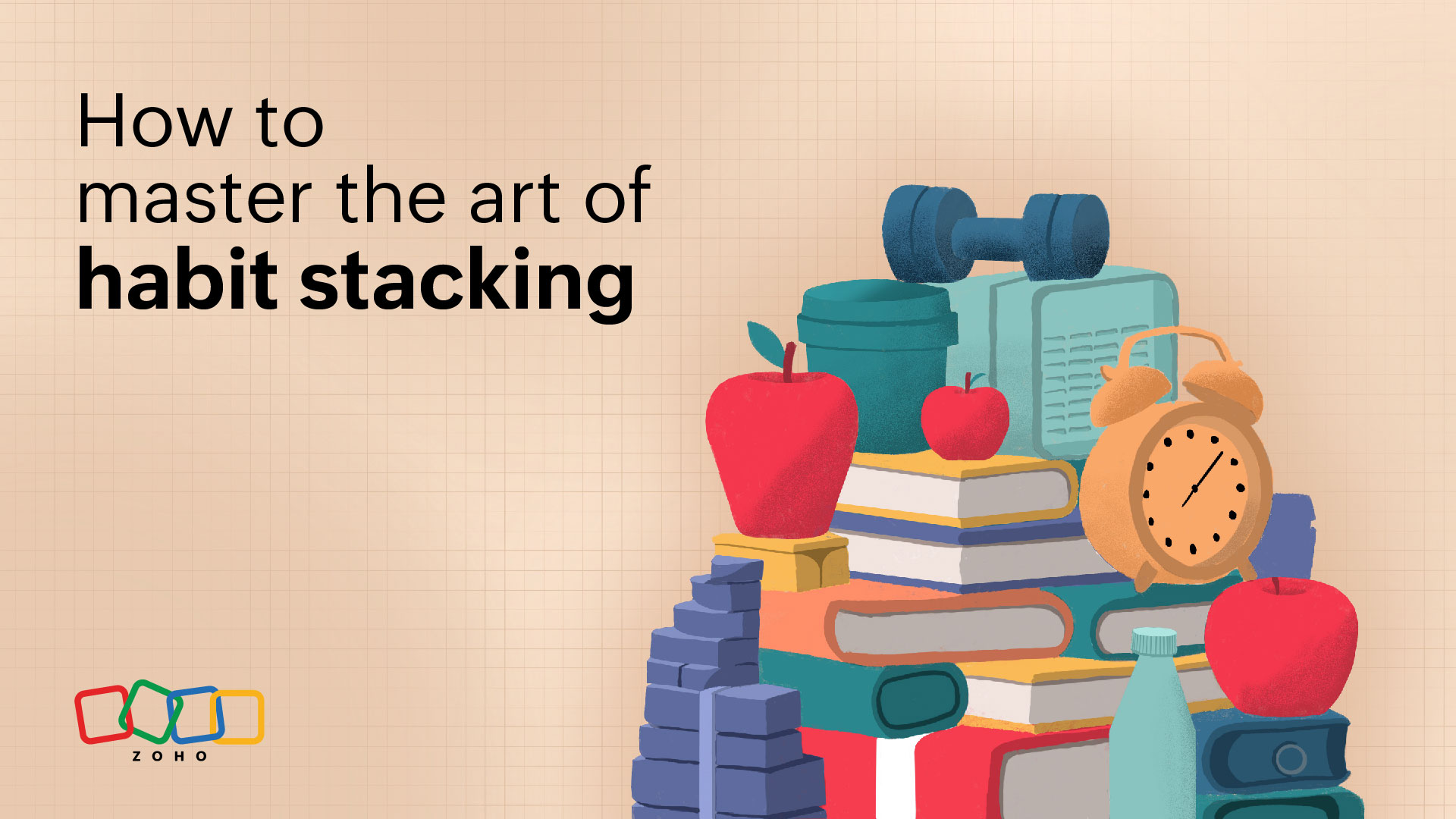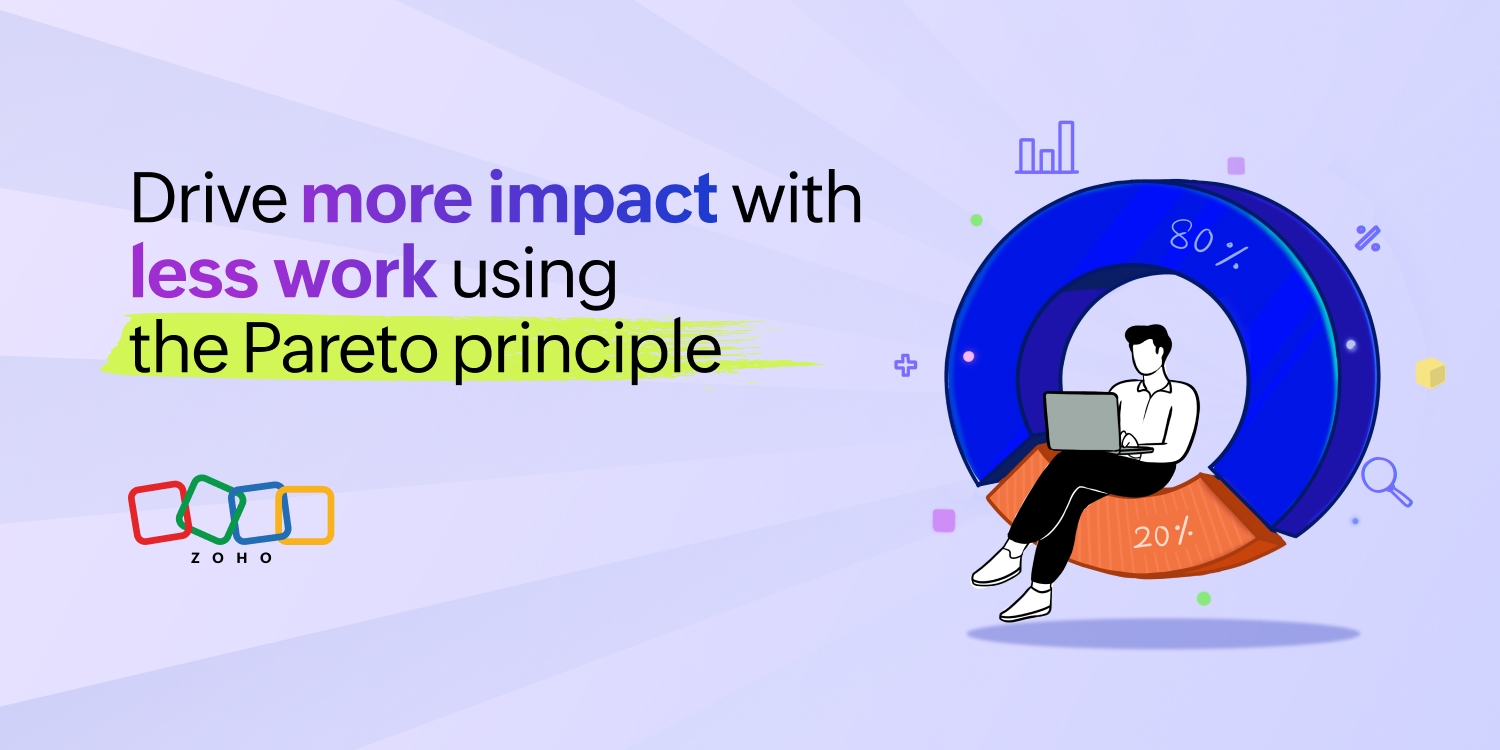- HOME
- All Topics
- Productivity in the workplace
- How to master the art of habit stacking
How to master the art of habit stacking
- Published : December 27, 2024
- Last Updated : March 24, 2025
- 384 Views
- 7 Min Read
Habit stacking isn’t just a productivity hack; it’s a cheat code for leveling up your life. Picture this: Instead of forcing new habits into your already chaotic routine, you piggyback them onto things you’re already doing—effortlessly creating momentum.
It’s about working smarter, not harder, to supercharge your growth, hit your goals, and dominate your day without burnout. Let’s cut the fluff—this is how you build habits that actually stick.

What is habit stacking?
At its core, habit stacking is the process of pairing a new habit with an existing one to make the adoption of the new behavior easier. This strategy capitalizes on the natural associative tendencies of the human brain.
Instead of attempting to create a new habit from scratch, you connect it to something you already do regularly, embedding the new habit into your routine in a more organic way.
Consider brushing your teeth every morning. This habit is deeply ingrained, requiring little to no conscious effort. If you want to start flossing regularly, attaching it to your tooth-brushing habit makes the process simpler. Over time, flossing becomes as automatic as brushing your teeth. This method of linking actions ensures consistency, as the established habit serves as a reliable cue for the new one.
The concept of habit stacking is grounded in behavioral psychology, particularly the cue-routine-reward framework popularized by Charles Duhigg in his book The Power of Habit. Simply by anchoring a new behavior to a strong cue, you reduce the mental barriers to adopting the habit, paving the way for long-term success.
The mechanics of habit stacking
To implement habit stacking successfully, it’s essential to understand its structure and how to apply it effectively. The process can be broken down into four key steps.
Identify your anchor habits
Begin by listing all of the habits you perform daily without fail. Making coffee in the morning? Check. Brushing your teeth? Check. Commuting, attending meetings, and writing emails? Check, check, and check.
Why are these seemingly mundane tasks important? They’re the anchors around which you’ll base your productivity and confidence. Anchor habits are reliable cues because they already form part of your daily routine. By recognizing them, you create a strong foundation for integrating new habits.
Define your new habit
Be specific about what you want to accomplish. Ambiguity leads to inconsistency, so choose a habit that is actionable and measurable. For example, instead of saying, “I want to read more,” decide to “read one page of a book every morning.”
Clear definitions make it easier to monitor your progress and refine your approach as needed. It’s how you learn to be accountable for your own actions, to yourself.
Pair the new habit with the anchor habit
Create a clear connection between the two habits. For instance, you could say, “After I make my morning coffee, I will write down three tasks I want to accomplish today.”
The existing habit acts as a cue, ensuring the new behavior feels less intrusive and more like a natural extension of your routine. Over time, this pairing becomes automatic.
Reinforce the routine
Consistency is key to habit formation. Repeat the sequence daily until the new habit becomes automatic. Most importantly—don’t compare yourself to others.
Tracking your progress can help maintain motivation. Tools like habit trackers or journals provide visual reminders of your commitment, reinforcing the behavior until it feels second nature.
Real-life applications of habit stacking
Contrary to popular belief, habit stacking isn’t just a shortcut to being more productive while doing your morning chores. On the contrary, it’s a simple approach that can improve every facet of your life. Here's how to do it.
Morning work organization
Every morning, after sitting down at your desk, you can review your calendar and prioritize tasks for the day. This simple practice ensures that you start each workday with a clear focus and an actionable plan.
Over time, this habit enhances productivity and reduces the likelihood of procrastination. It will become muscle memory, and before you know it, you’ll find yourself more efficient.
Post-meeting reflection
After completing a meeting, take a few minutes to jot down key takeaways and action items. This habit not only reinforces accountability but also ensures follow-through on important decisions.
Regular reflection fosters better collaboration and helps maintain alignment with team goals. With this approach, you can apply the lessons learned more quickly and achieve results in no time.
Email management
After opening your inbox, you need to immediately categorize emails into actionable, informational, or discardable. This approach not only minimizes clutter but also keeps your email inbox clean, creating a system for efficient email management.
Over time, it reduces the stress associated with a constantly overflowing inbox. Likewise, if a particularly tricky or demanding email arrives, you’ll be ready to handle it right away.
Break time productivity
After taking a coffee break, use the next five minutes to review ongoing projects or update task lists. This habit ensures that your breaks transition seamlessly into productive work sessions, maintaining momentum throughout the day.
However, this doesn’t mean you should forego your break to use every minute possible. It will only lead to more anxiety, mental fatigue, and, eventually, burnout.
End-of-day planning
After logging off your computer, spend five minutes preparing for the next day. Outline key tasks, set priorities, and reflect on the day’s achievements. This practice helps you start the next morning with clarity and focus, boosting overall efficiency.
Everyone hates starting the day with a plethora of tasks they have to slot into their schedule. By doing this the day before, you’ll give yourself an additional boost of motivation.
The benefits of habit stacking
Habit stacking offers numerous advantages that make it a powerful tool for personal and professional development, including:
Simplified habit formation: Attaching new behaviors to established habits helps you eliminate the need for standalone cues, making the adoption process less daunting.
Reduced cognitive load: The brain’s natural tendency to associate related actions simplifies the process, reducing the mental effort required to form new habits.
Compounded results: Small, consistent actions lead to significant long-term improvements. Habit stacking creates a compounding effect, where each positive action reinforces the next.
Improved time management: Combining habits into a streamlined sequence saves time and energy, allowing you to focus on what truly matters. Not to mention, this effect will compound over time, making you more and more efficient.
Customizable framework: Habit stacking is flexible, allowing you to tailor it to your unique needs and preferences. You can start with simple stacks and gradually build more complex routines as your confidence grows.
Challenges of habit stacking
While habit stacking is a highly effective strategy, it’s not without its challenges. Understanding potential obstacles can help you navigate them more effectively, with the most prominent being:
Overloading yourself: Attempting to stack too many habits at once can lead to frustration and burnout. Start with one or two new habits and expand gradually. If it’s working, great; if not, you'll have to lessen the burden and pinpoint any exact reasons you failed to establish a certain habit.
Weak anchor habits: If the existing habit is not firmly established, it may not provide a reliable cue for the new behavior. Choose anchor habits that are consistent and automatic, ones that don’t require excess effort, learning, or too much motivation.
Lack of motivation: If the new habit doesn’t align with your goals or values, sustaining it will be difficult. Ensure the habit is meaningful to you and that you’re doing it with a specific goal in mind.
Life disruptions: Travel, illness, or unexpected events can disrupt routines, making it harder to maintain consistency. Plan for contingencies and be flexible when needed. It’s not the end of the word if you have a bad day because of external factors.
Neglecting reinforcement: Without a sense of progress or reward, the new habit might feel unrewarding, making it less likely to stick. Repeat your goal to yourself daily—you’d be surprised how effective this psychological trick really is.
Building a habit-stacking routine
To create a sustainable habit-stacking routine, you must:
Audit your existing habits
The first step to building effective habit stacks is auditing your current habits. Identify the actions you perform consistently every day. These are the routines that anchor your life, such as brewing coffee in the morning, brushing your teeth, or commuting to work.
After recognizing these habits, you can begin to see where new habits could naturally fit. Take the time to write a list of these actions and consider their frequency, location, and timing—all of which will help you determine suitable anchors for your new habits.
Set clear goals
Setting clear, actionable goals is critical for successful habit stacking. Vague intentions like “get healthier” or “be more productive” lack the specificity needed for sustained progress. Instead, break your goals into tangible steps.
For instance, if your goal is to improve fitness, your habit might be to “do 10 push-ups every morning.” By clarifying what success looks like, you make it easier to track and achieve your objectives.
Craft your habit stacks
Once you’ve identified your anchor habits and set clear goals, it’s time to pair new habits with existing ones. Crafting a logical sequence ensures the new behavior feels like a natural extension of your routine.
For example, “After I pour my morning coffee, I will review my to-do list for the day.” This method not only reinforces the new habit but also minimizes resistance by embedding it within a familiar context.
Review and refine
Periodic reviews of your habit stacks ensure that they remain aligned with your goals and lifestyle. As your needs and circumstances evolve, some habits may need adjustment.
For instance, a habit stack that works during a structured workday may need modification for weekends or holidays. Continuously refining your approach keeps your habit stacks relevant and effective, allowing you to sustain long-term success.
Conclusion
When practiced consistently, habit stacking can transform your approach to personal development and productivity. It creates a foundation of positive behaviors that compound over time, helping you achieve your goals with greater ease and efficiency.
Habit stacking is also more than just a technique—it’s a mindset. It’s about recognizing the power of small actions and leveraging them to create meaningful change. Whether you’re looking to improve your health, enhance your productivity, or strengthen your relationships, habit stacking offers a practical, effective path forward. Begin today by identifying one habit you want to cultivate and pairing it with something you already do. The results may surprise you.
 Gary Stevens
Gary StevensGary Stevens is the CTO of Hosting Canada, a website that provides expert reviews on hosting services and helps readers build online businesses and blogs. Gary specializes in topics on cloud technology, thought leadership, and collaboration at work.










